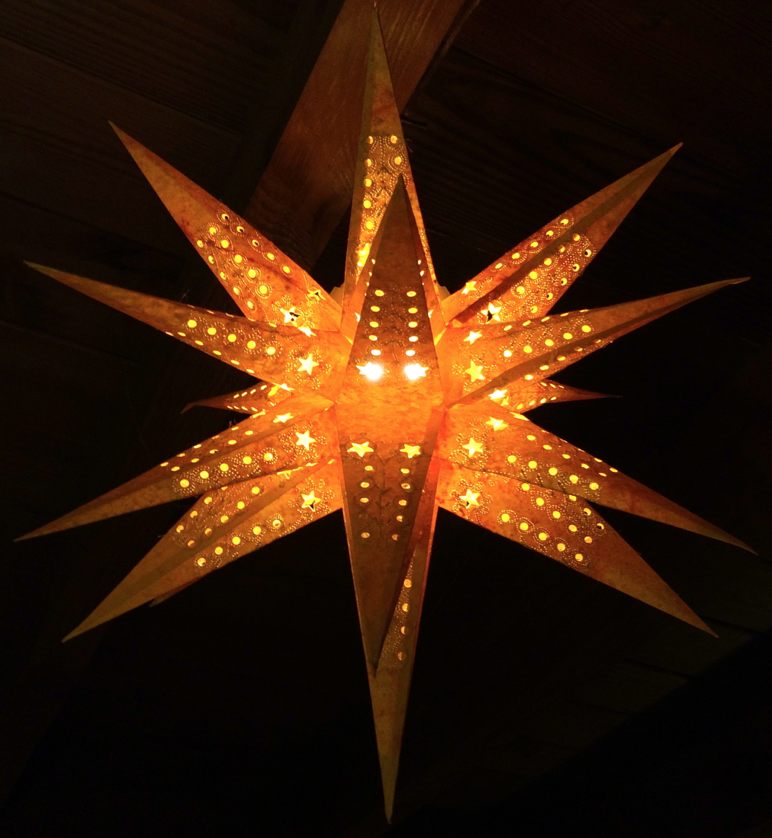Glimpses of Healing and Hope
December 19, 2016
By: Jane Bishop Halteman

Late sunrises, early sunsets, the low arc of the sun across the sky each day, and lengthy noontime shadows announce we are moving toward the winter solstice, marking the year’s shortest day and longest night.
It is during this season, when merriment and festivity take center stage and our culture screams glitter, that many churches, including ours, have chosen to acknowledge with a longest night service that Christmas can be a bittersweet time for those suffering grief and loss, whether the anguish of broken relationships or lost loved ones, the insecurity of unemployment, the weariness of ill health, the pain of isolation, the aches of poverty, violence, injustice, or, in this particular year, the unsettledness left in the wake of a very contentious election cycle and fear for the marginalized.
We will take time together to recognize our sadness and yearning to know God’s presence in the midst of pain Wednesday, December 21, at 7 p.m. Join us in the sanctuary to declare that we experience darkness in many ways, even (or perhaps especially) during our culture’s long holiday celebration encompassing Thanksgiving, Christmas, and New Year’s Day. At this time of the year, when daylight diminishes to barely nine and one half hours, it can be difficult to imagine our lives six months from now when daylight will prevail once again for 15 to 16 hours.
Called a Blue Christmas service in some circles, the longest night observance offers space away from the constant December refrain reminding us that this is the season to be jolly. For some, this Christmas may be the first year without a loved one or a job or perhaps the first year with new knowledge of a serious health issue. For many, the season becomes a particularly difficult time of balancing painful losses as others are celebrating their joy with family and friends.
As we move through this darkness of the winter solstice and begin the return to longer days and shorter nights, we pause during the longest night service to remember the dark times in our own lives and the lives of others. We will witness the lighting of our Advent wreath candles, with the first candle representing our own grief, the second our courage, the third our memories, and the fourth our love. Participants also will be offered the opportunity to light candles and plant them in sand to recognize burdens, griefs, sorrows, or whatever makes Christmas a “blue” time for themselves, others, and our world.
Join us to proclaim that, even in our despair, God promises to walk with us as we experience insecurity, grief, and isolation. We will find solace together in this hope, with prayer, scripture reading, music, and quiet time as we look toward the dawn on the other side of the longest night.
This Jan Richardson post from December 2015 at the Advent Door describes how she has journeyed through the grief of losing her husband during Advent several years ago: “If I have learned anything about grief in the past two years, it is that grief is a wild creature. Grief will resist every attempt to tame it, to control it, or to keep it tidy and well-behaved. Rather than managing it, grief asks instead that we tend it, listen to it, question it. One of the surest ways to calm it is to give it some space in which to speak—or to holler, or weep.”
Richardson describes new ways she has learned to tend her grief as she notices more about the boundaries between heaven and earth, new methods of opening herself to knowing, more options for practicing the art of intentional remembering, and the discovery of darkness as a place where God meets us.
“Comfort, O comfort my people, we hear God cry out in an Advent text from Isaiah (40:1). If, in this life, I cannot do away with grief, then I pray that I will at least enter into it with a heart open to this comfort, this solace that is one of the greatest treasures God offers us in the landscape of this season. This comfort is no mere pablum, no saccharine wish. And though it is deeply personal, it is not merely that; solace does not leave us to our own solitude. True comfort opens our broken heart toward the broken heart of the world and, in that opening, illuminates a doorway, a threshold, a connection. It reveals to us a place where, in the company of heaven and earth, we can begin anew, bearing forth the solace we have found.”
And in the midst of this darkest time of the calendar year in our part of the world, when too much cold and snow and ice lead some of us farther down the road to despair, warm yourself with this story about kindness, which reveals how a Muslim-owned restaurant in London is offering a free meal to elderly or homeless persons who would otherwise be alone on Christmas day.
You may find it a useful spiritual discipline to watch for the care of strangers who meet you with kindness when you least expect it. I was the recipient of unexpected care last week at the Grand Rapids Trader Joe’s store where I shopped for snacks for long-time friends who would be hosting family and other guests this past weekend in connection with the memorial service of their 33-year-old son. “Wait a minute…don’t go yet,” the check-out clerk said after I had completed the transaction, explaining a bit about my purchases. She ran over to the TJ’s flower kiosk and came back with a beautiful bouquet of yellow tulips for my friends, a big hug for me, and a few tears all around.
May our longest night service equip us with small tokens of comfort we might carry to others.